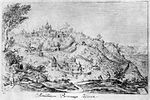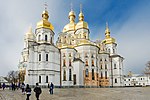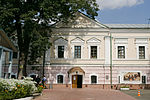Kyiv Pechersk Lavra
1051 establishments in EuropeBuildings and structures in KyivCave monasteriesCemeteries in KyivChristian monasteries established in the 11th century ... and 17 more
Eastern Orthodox church buildingsEastern Orthodox monasteries in UkraineHistoric sites in UkraineKyiv Pechersk LavraLandmarks in KyivLavrasMonasteries of the Ukrainian Orthodox Church (Moscow Patriarchate)Monuments and memorials in KyivPecherskyi DistrictProtected areas established in 1926Protected areas of UkraineReligious museums in UkraineSymbols of KyivTourist attractions in KyivUse British English from June 2021Vague or ambiguous time from September 2018World Heritage Sites in Ukraine

Kyivo-Pechers’ka Lavra (Ukrainian: Києво-Печерська лавра, romanized: Kyievo-Pecherska lavra), also known as the Kyiv Monastery of the Caves, is a historic Eastern Orthodox Christian monastery which gave its name to one of the city districts where it is located in Kyiv. Since its foundation as the cave monastery in 1051, the Lavra has been a preeminent center of Eastern Orthodox Christianity in Eastern Europe.
Excerpt from the Wikipedia article Kyiv Pechersk Lavra (License: CC BY-SA 3.0, Authors, Images).Kyiv Pechersk Lavra
Соборна площа, Kyiv Pechersk
Geographical coordinates (GPS) Address Nearby Places Show on map
Geographical coordinates (GPS)
| Latitude | Longitude |
|---|---|
| N 50.434166666667 ° | E 30.559166666667 ° |
Address
Києво-Печерська цитадель
Соборна площа
01015 Kyiv, Pechersk
Ukraine
Open on Google Maps











